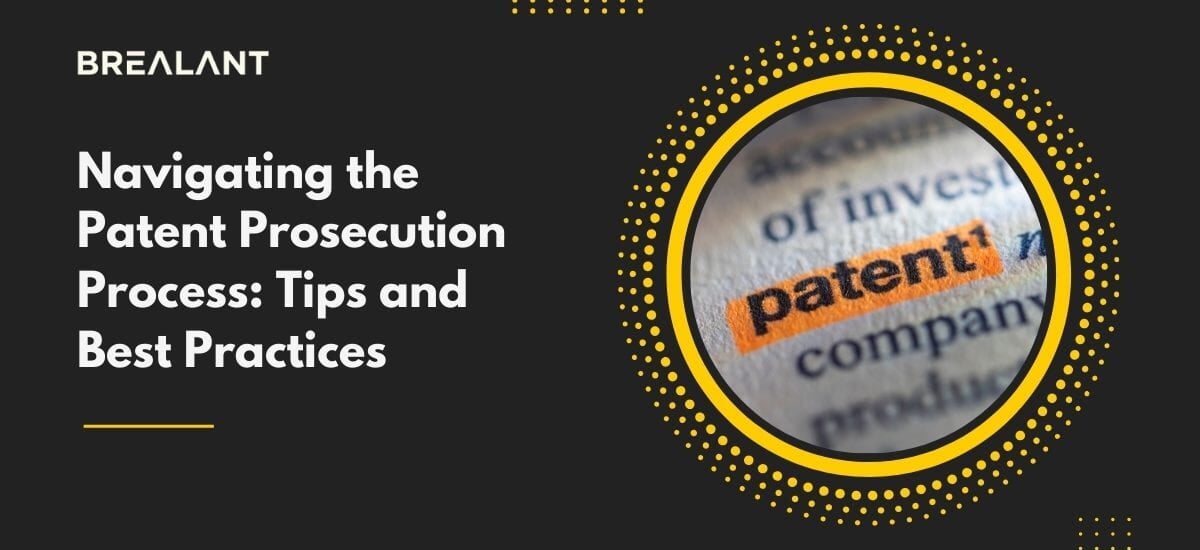
There is no doubt that the patent prosecution process can be a complex and daunting challenge. Not only is it essential to be armed with the latest information, but you also must navigate a complex legal system. This article will provide tips and best practices for navigating the patent prosecution process.
Patents protect inventions and are among the most valuable assets of any business. Although obtaining a patent is not a trivial task, there are many pitfalls that you should avoid. By following these tips, you can ensure that your patent application succeeds.
What are the best practices for patent prosecution?
Navigating the patent prosecution process can be a complex and challenging task. Here are some tips and best practices to help inventors and applicants successfully obtain a patent in the United States:
- Consult a Patent Attorney: Working with a registered patent attorney or agent who is well-versed in patent law is highly advisable. They can provide valuable guidance, conduct prior art searches, and help draft a robust patent application.
- Thoroughly Document Your Invention: Maintain detailed records of your invention’s development, including notes, drawings, prototypes, and any improvements. This documentation can be crucial during the patent examination process.
- Conduct a Comprehensive Prior Art Search: Before filing a patent application, perform a thorough prior art search to identify existing inventions or technologies similar to yours. This will help you assess the patentability of your invention and refine your claims accordingly.
- Write Clear and Precise Patent Claims: The claims section of your patent application is critical. Ensure that your claims are clear, specific, and accurately define the novel aspects of your invention. Work closely with your patent attorney to draft strong claims.
- Enablement and Best Mode: Your patent application should enable someone skilled in the relevant field to make and use the invention without undue experimentation. Also, disclose the best mode of practicing the invention. Please do so to ensure your patent is protected.
- Consider Multiple Dependent Claims: Including multiple dependent claims can help provide fallback positions during examination. If a broader claim is rejected, having narrower dependent claims can increase the chances of obtaining a patent.
- Response to Office Actions: Prepare for Office Actions written responses from the USPTO. These can include rejections or requests for clarification. Work closely with your attorney to craft well-reasoned and persuasive responses.
- Patent Examiner Interviews: Consider requesting an interview with the patent examiner. These interviews provide an opportunity to discuss and clarify points of contention and resolve issues more efficiently.
- Continuation Applications: If your initial application faces insurmountable challenges, consider filing a continuation application to pursue additional claims or provide further evidence.
- Patent Maintenance: Pay the required maintenance fees to keep the patent in force after obtaining a patent.
- Market Considerations: While navigating the patent process, consider the broader market and business strategy. A patent is a valuable asset but should align with your overall business objectives.
- Keep Abreast of Changes in Patent Law: Stay informed about patent law and regulations updates, as these can impact the patent prosecution process.
What are the mistakes to take care of?
During the patent prosecution process, there are several common mistakes that applicants should avoid to improve their chances of successfully obtaining a patent. Here are some key mistakes to steer clear of:
- Insufficient Prior Art Search: Failing to conduct a comprehensive prior art search before filing the patent application can result in claims too broad or already anticipated by existing inventions. A strong prior art search is critical to assess the patentability of your invention.
- Inadequate Patent Specification: Providing an incomplete or vague patent specification can hinder the patent examiner’s understanding of your invention. Ensure your patent application is thorough and detailed and provides transparent, enabling disclosure.
- Failure to Respond to Office Actions Timely: Missing deadlines for responding to USPTO Office Actions can result in the abandonment of your patent application. Ensure you adhere to all deadlines and communicate with the USPTO as necessary.
- Ignoring Patent Examiner’s Feedback: Patent examiners may issue rejections or requests for amendments. Ignoring or dismissing their feedback without addressing it can result in a protracted prosecution process.
- Failure to Disclose All Relevant Prior Art: You must disclose all relevant prior art to the USPTO. Failure to do so can have serious consequences, including invalidation of the patent.
Conclusion
When planning your patent strategy, it’s vital to understand the different stages involved in the process. Remember that obtaining a patent is a complex and time-consuming process, and not all inventions are granted a patent. Working with an experienced patent attorney or IP expert can greatly improve your chances of successfully navigating the patent prosecution process and protecting your intellectual property. Brealant will guide you in this challenging situation and provide tech-driven solutions for all your IP needs.

